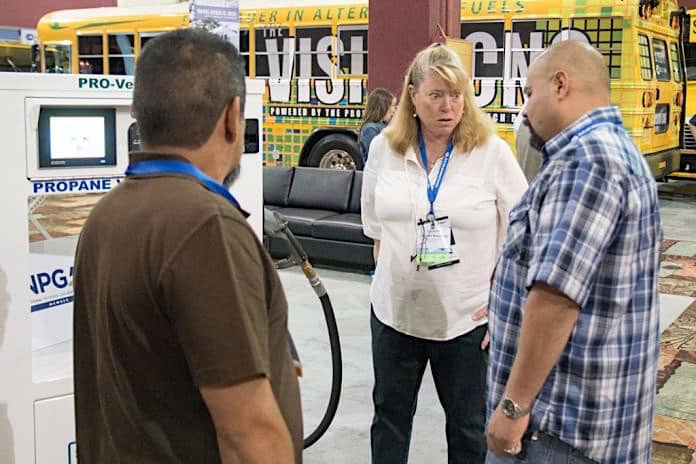The EPA and the National Highway Traffic Safety Administration are targeting 24 percent in an added reduction of carbon dioxide emissions and fuel consumption for school buses and other medium- and heavy-duty vehicles over the next decade with new Phase 2 rules to cut greenhouse gases and improve fuel economy.
The new standards published Tuesday are part of President Obama’s Climate Action Plan to cut more than 1 billion tons of CO2 over the life of the vehicles and save 2 billion barrels of oil consumed. Rather than blanket regulations for all types of vehicles, as was the case with phase 1 rule for 2014-2018 vehicles, the latest regulations are vehicle specific.
EPA said payback of additional vehicle purchase costs from fuel savings is estimated at about four years for vocational vehicles, which include school buses. EPA added that this category of vehicles represents approximately 17 percent of the fuel consumption and GHG emissions from all medium- and heavy-duty vehicles.
EPA and NHTSA project that the vocational vehicle standards, the category school buses belong to, could be met through improvements in the engine, transmission, driveline, lower rolling resistance tires, workday idle reduction technologies, weight reduction and some application of hybrid technology.
As for vocational diesel and gasoline engines, the standards seek an additional 4-percent reduction in both CO2 emissions and fuel consumption through the use of combustion optimization, improved air handling, reduced friction within the engine, improved emissions after-treatment technologies and waste heat recovery.
“It is very important to note that we will face regulations for fuel economy and CO2 improvement of the specific vehicle, changes that will involve engine and chassis component design,” said Robert T. Pudlewski, a school bus technology consultant and STN’s technical editor. “I can only assume it will be expensive with the cost spread out over the next 10 years.”
The phase-in for school buses begins with model-year 2021, when the vehicles are projected to realize a 12-percent GHG emission reduction at the tailpipe as a result of the new rule and fuel savings of between $1,000 and $1,600 per vehicle while absorbing a 1-percent new purchase cost increase. Within three years, or with the 2024 model year, those savings are expected to climb to 20-percent GHG reduction and about $2,000 per-vehicle savings with a 2-percent increase in typical vehicle price.
A 24-percent emissions reduction and about $2,700 in per-vehicle cost savings with a 3-percent cost increase are expected by full phase-in for model-year 2027 school buses.
Related: EPA Awards Clean School Bus Grants in Several States
Related: EPA Accepting Applications for DERA School Bus Rebates Program
Related: EPA Extends Clean Diesel Tribal Grant Applications Timeline
Related: EPA Announces DERA Funding Recipients
Related: California Lower-Emission School Bus Program Issues Revisions
Related: EPA to Propose New Standard on NOx Emissions
Related: EPA Grant Brings 4 Blue Bird Electric School Buses to New York District
Related: EPA Announces Latest School Bus Rebate Awards
















